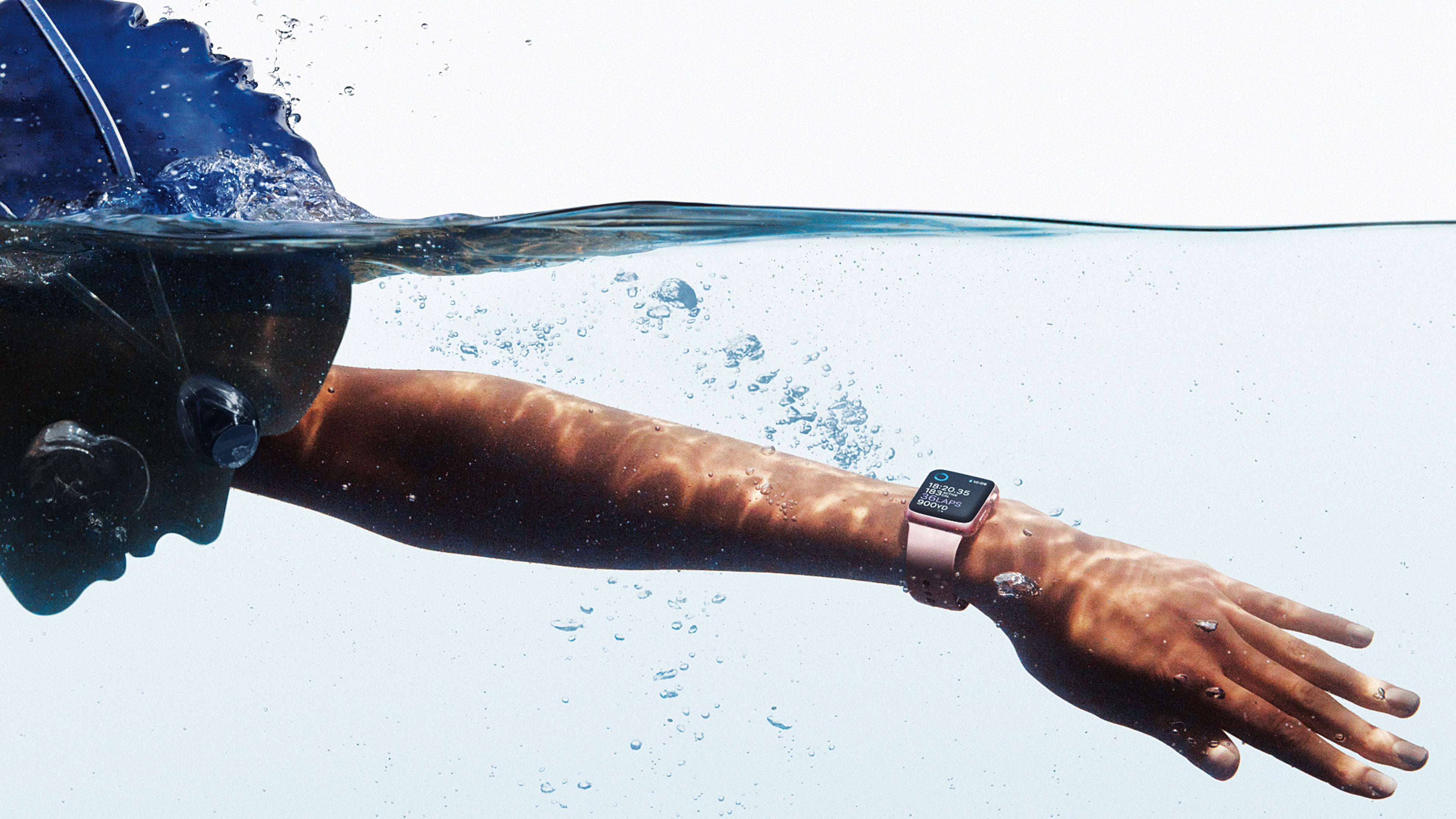Apple first used water resistance as a selling point around the two new products it announced Wednesday—the iPhone 7 and Apple Watch Series 2—but it’s certainly not the first time Apple has built waterproofing into its products.
The iPhone 7 and iPhone 7 Plus are now officially rated with the same IP67 water- and dust-resistance rating as other premium smartphones. That rating comes from a standards body called the International Electrotechnical Commission. It means the devices can resist the ingress of water for a half hour at a depth of one meter. Actually Samsung’s Galaxy S7 and Galaxy Note 7 lines are rated at IP68, meaning that they can withstand slightly deeper water (1.5 meters) with more water pressure.
The new Apple Watch Series 2, being targeted at swimmers, can survive in fifty meters of water for thirty minutes, Apple says. It’s rated under ISO (International Organization of Standardization) standard 22810:2010. This means that it may be used for shallow-water activities like swimming in a pool or ocean. However, Apple Watch Series 2 should not be used for scuba diving, waterskiing, or other activities involving high-velocity water or submersion below shallow depth. That’s way better than some other smartwatches on the market. Samsung’s new Gear S3 is rated at IP68. The Huawei Watch is rated IP67.
But both the first Apple Watch and the iPhone 6s were treated to resist water and dust to some degree.
I personally have showered with my Apple Watch (Series 1) on my wrist and the device kept right on ticking.
As for the iPhone 6s, several people showed in videos that the phones do surprisingly well under water for extended periods.
NOTE: DO NOT TRY TO PLACE YOUR IPHONE 6S (OR EARLIER) IN WATER AND EXPECT IT TO SURVIVE.
In iFixit’s teardown of the iPhone 6s, they noted the presence of waterproofing material in several places inside the device. (However, to be fair, I note that some of the commenters took issue with this assertion.)

One supplier source told me that many electronics manufacturers use waterproofing treatments on materials, and use water for cleaning during the manufacturing process. But the game changes when the battery is connected. Everything must be sealed so that water does not form a connection between the metal in the phone an the power from the battery.
I suspect that Apple did not have the waterproofing work done in the first Watch and in the iPhone 6 to the point where it felt it could get a formal water- and dust- resistance rating or make any guarantees to customers about it. This is in line with Apple’s commendable habit of not bragging about features and attributes before it knows they work.
The iPhone 6s and the first Apple Watch may have been seen by Apple as test devices for the water- and dust-proofing efforts.
Recognize your brand’s excellence by applying to this year’s Brands That Matter Awards before the early-rate deadline, May 3.
